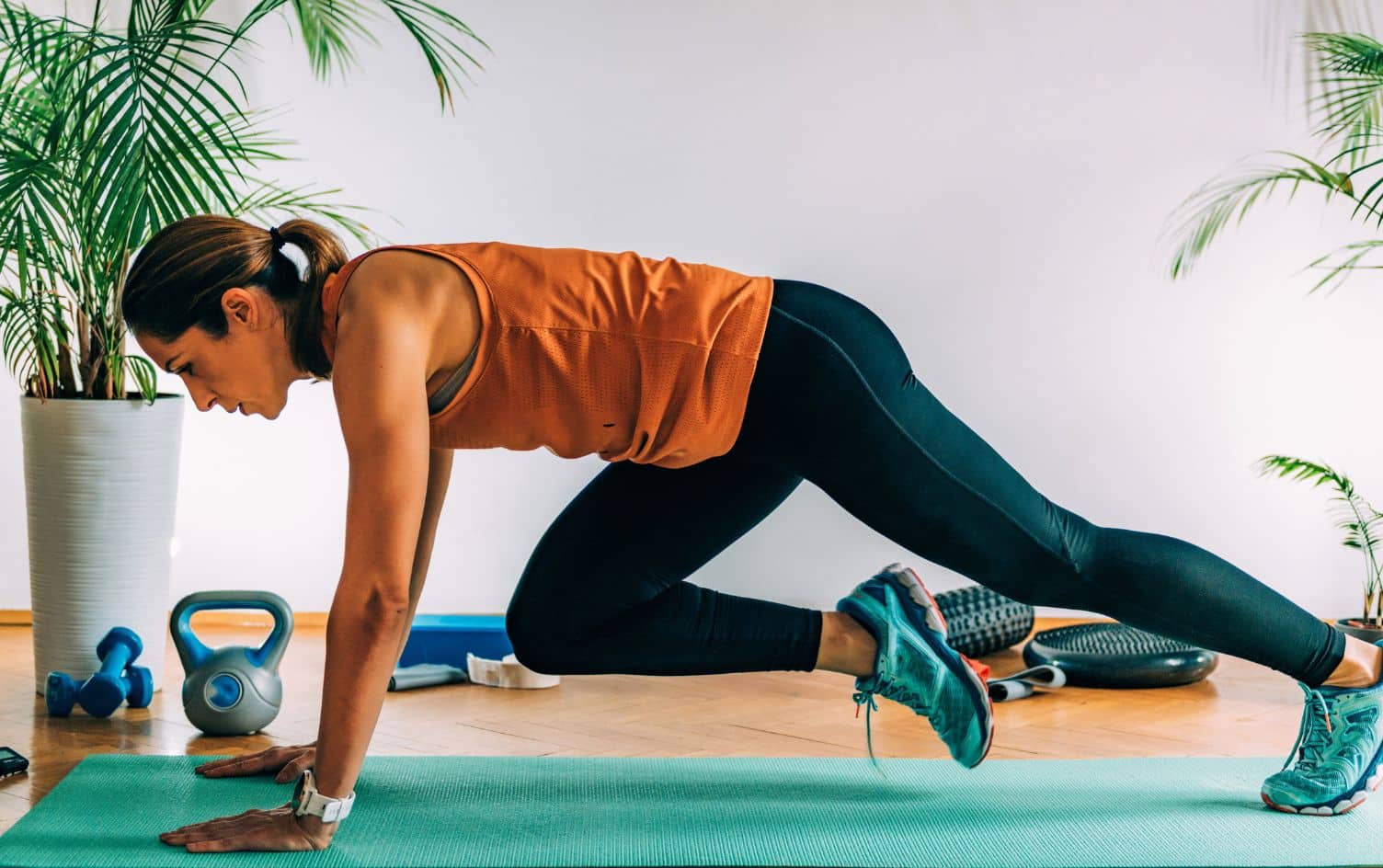Thanks to research linking high-intensity interval training to weight loss, lower BMI, reduced cholesterol and improved athletic performance, the heart-pumping workout is a hot fitness trend. But there might be a downside to high-intensity workouts.
TRENDS IN INJURY RISK
A new study in the Journal of Sports Medicine and Physical Fitness found HIIT increased the risk of injuries. Researchers discovered more than 3.9 million injuries associated with the use of barbells, kettlebells, burpees and lunges listed in a national database; the number of injuries increased alongside interest in HIIT. The listed injuries ranged from concussions and sprains to nerve damage and puncture wounds; most injuries involved the knees and shoulders.
It’s not the first study to link HIIT to an increased risk of injuries. In 2017, researchers found higher rates of muscle trauma linked to spinning classes. “HIIT alters the perceived exertion of an exercise between high intensity and active recovery with minimal-to-no rest time,” explains Matt Minard, a physical therapist and certified strength and conditioning coach for Carolina Rehabilitation.
For those who are new to exercise, the combination can be problematic. In the research that looked at injuries related to spinning classes, a significant percentage occurred in first-time participants. The researchers behind the Journal of Sports Medicine and Physical Fitness research also called out inexperienced exercisers.
In a statement, co-author Dr. Joseph Ippolito of Rutgers New Jersey Medical School, explained, “These workouts are marketed as ‘one size fits all.’ However, many athletes, especially amateurs, do not have the flexibility, mobility, core strength and muscles to perform these exercises.”
HAVE A FOUNDATION OF FITNESS
Before starting a HIIT workout, Lacey Stone, a personal trainer on the reality show “Revenge Body with Khloé Kardashian,” suggests scheduling a few sessions with a personal trainer to learn the basics. A good trainer will create a roadmap to go from sedentary to HIIT expert. Taking it slow, Stone explains, helps avoid injuries.
“You can’t just jump into HIIT without having a foundation in fitness,” she says. “You need to build up to HIIT exercises. Injuries happen when unexperienced people try to achieve the hardcore HIIT workout sessions.”
MAKE TIME FOR RECOVERY
It’s also a good idea to incorporate longer rest periods into your first high-intensity workouts, says Minard. Start with an exertion level of 7/10 (the “work” phase) for 20 seconds and slow down to 3/10 (the “recovery” phase) for 40 seconds. As your fitness level improves, increase the time spent in both phases to 30 seconds each and aim to achieve cycles of 45 seconds in work and recovery modes over time.
While HIIT is a great addition to a workout program, high-intensity bouts of exercise shouldn’t dominate your schedule. Stone suggests 2–3 HIIT workouts per week interspersed with lower intensity exercises like swimming, yoga or walking.
“No matter what exercise routine you’re doing, you make the time for proper rest in between each workout to go the distance and avoid injuries,” she says.




